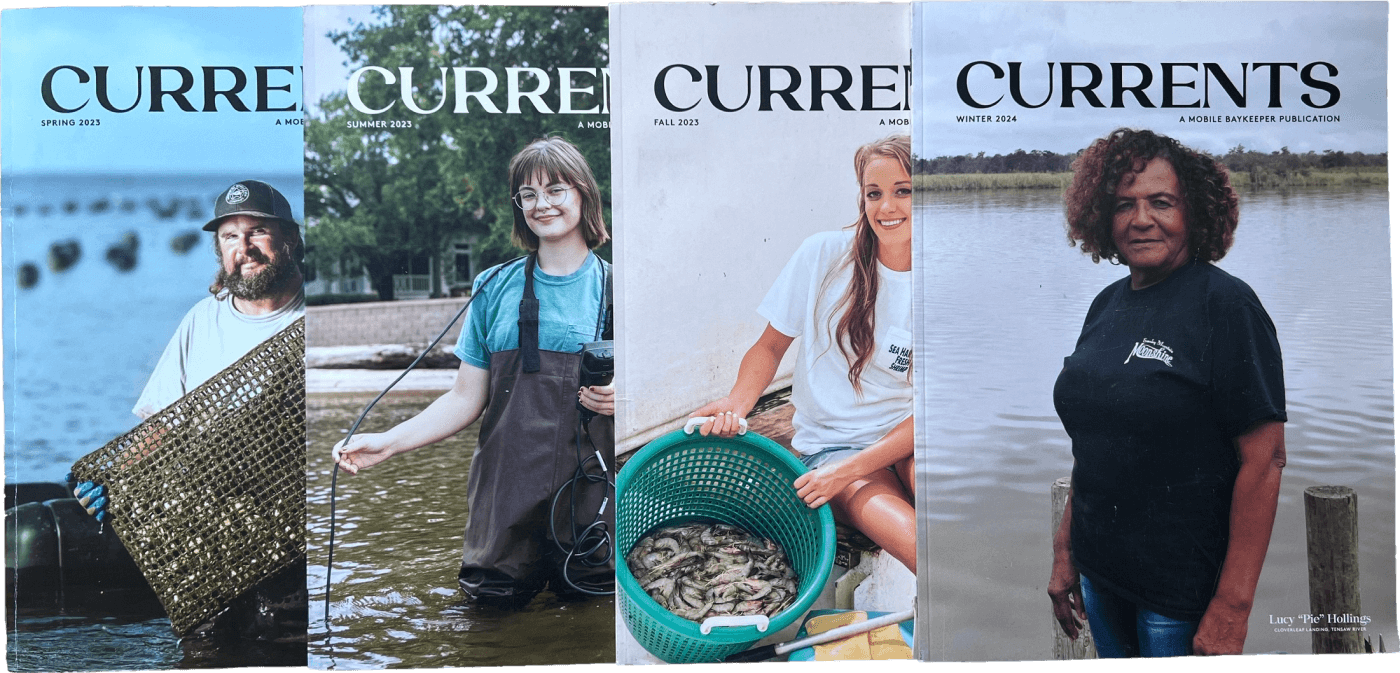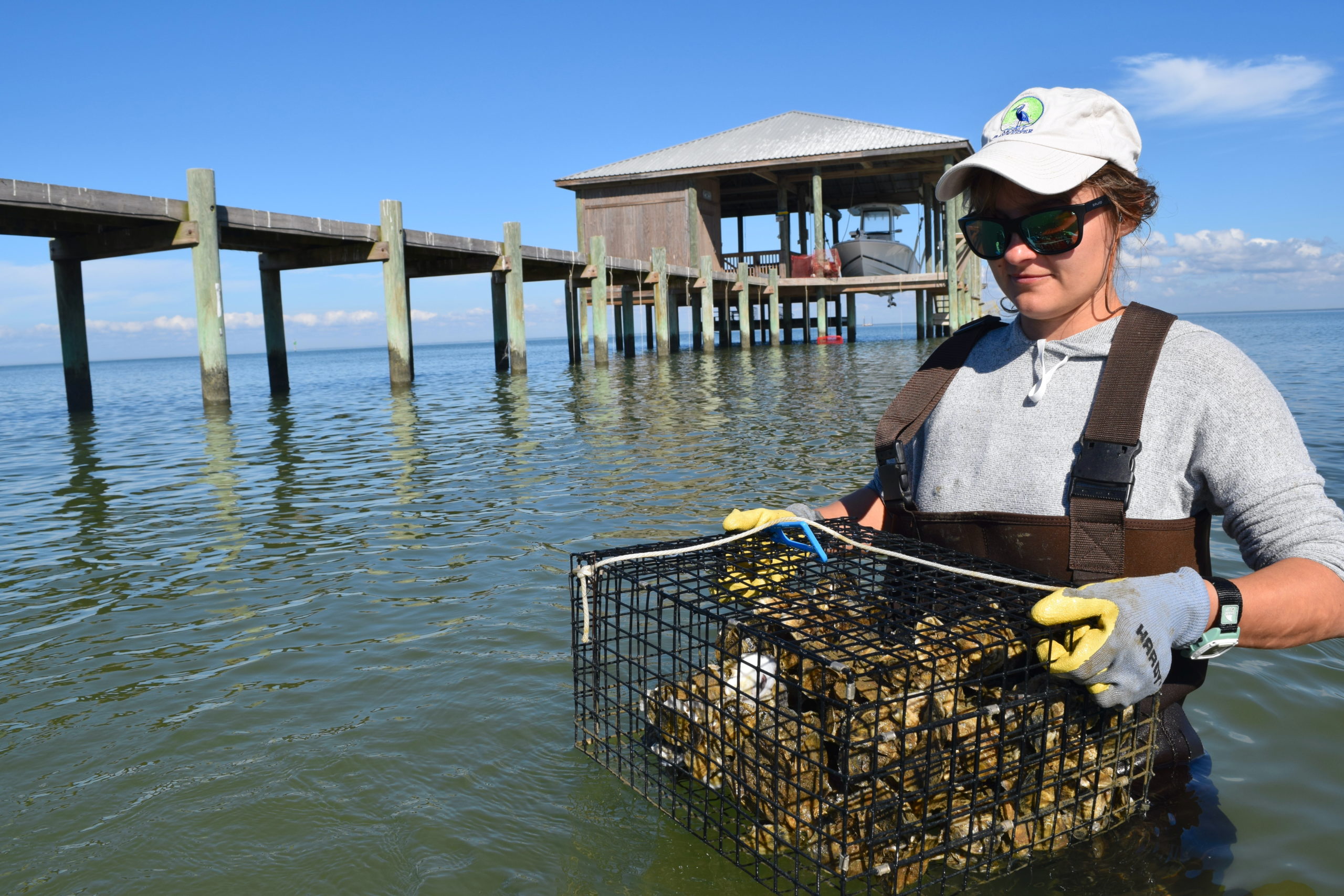
This article is from the winter edition of Mobile Baykeeper’s print quarterly, CURRENTS. The magazine is mailed to active members who have given more than $50 in the past year. To get on the magazine’s mailing list, donate here.
by Cassie Bates | Photos by Caine O’Rear and Chloe Ray
“Heads up, dropping now!”
Our field crew makes way as a dockside oyster-basket crashes into the surf. After spending months in the water dangling from a pier, these garden baskets have grown heavy and now house a hearty cluster of oysters, crabs, and the occasional pinfish. The cages teem with life and are covered in algae and barnacles. An “all-clear” shout up to the team is followed by a quick cage hoist. A team member then pressure washes the cage on the dock and checks for predators. The cage is then tossed and the process is repeated.
Through wind and rain our team continues moving thousands upon thousands of oysters back and forth from the water to the dock and back again. Scrapes, bruises, and crashing waves are a common occurrence on site for the Baykeeper Field Team. It can be hard work, but what’s the effort all for?
Tending to 70 cages filled with approximately 35,000 oysters is a labor of love. The result of our efforts is not for eating, but for reef restoration. According to reports, our local oyster populations have declined by roughly 80 percent since the 1950s. This decline is a result of past dredging, over-harvest, and pollution, with additional pressures stemming from climate change and predators. All of this makes it difficult for our reefs to thrive. Oysters are versatile creatures that can adapt to fluctuations in water quality. However, as our waters become warmer, saltier, and less oxygenated, and more reef habitat gets smothered by sediment, oyster populations suffer in the face of simultaneous threats.
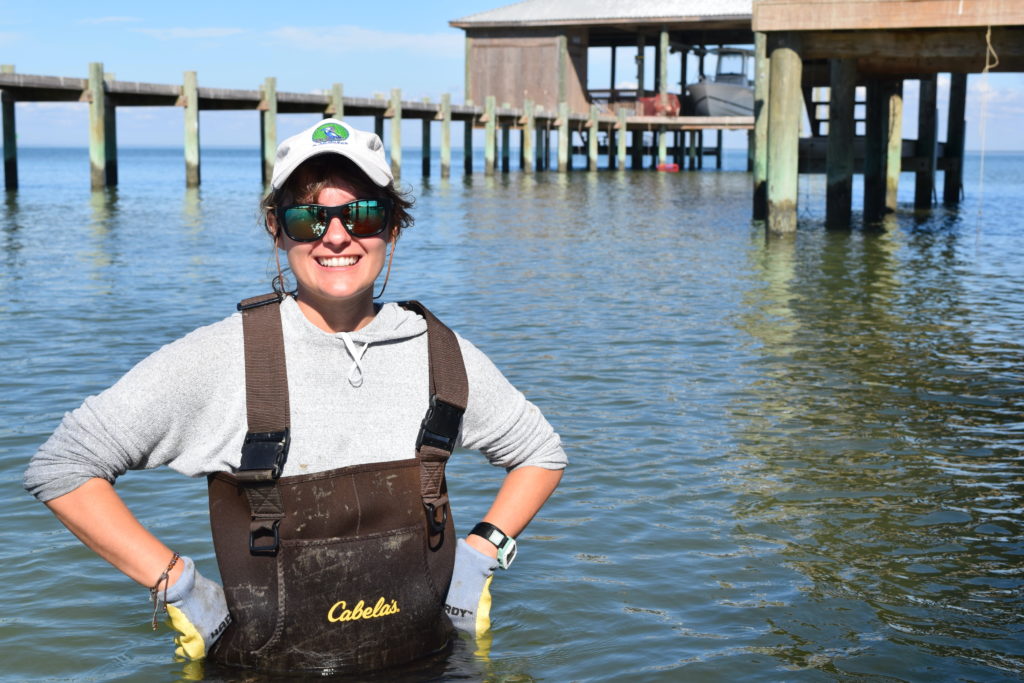
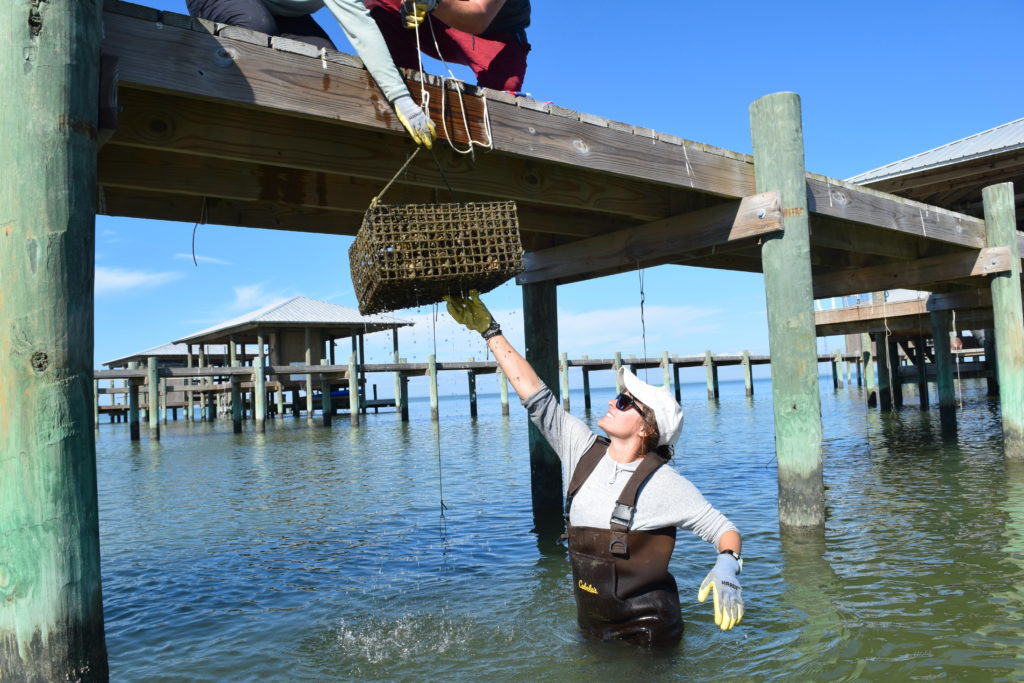
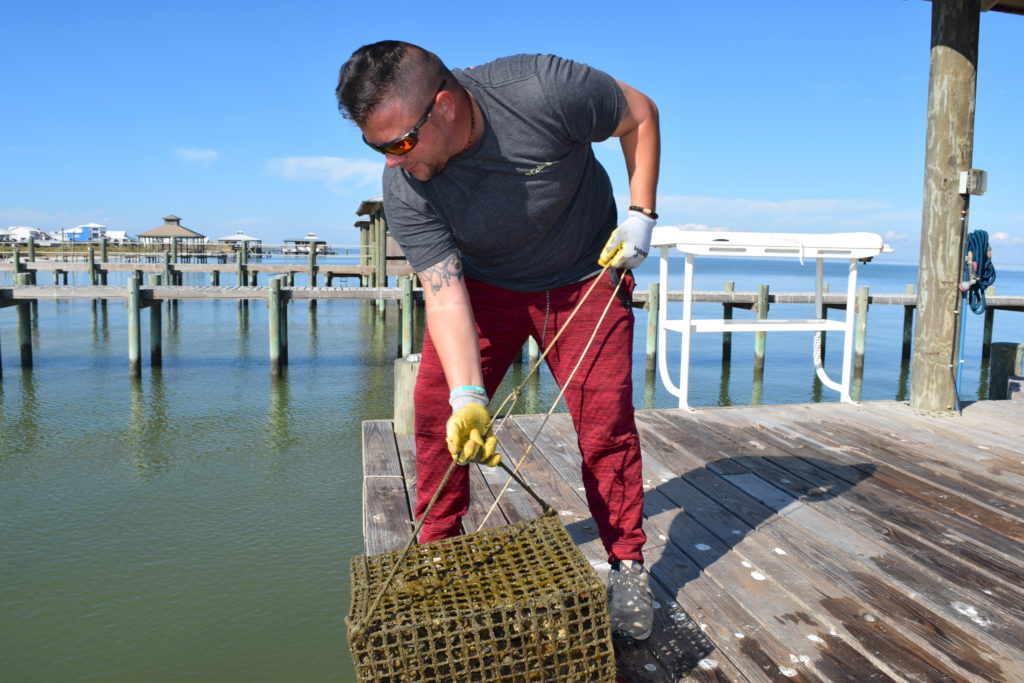
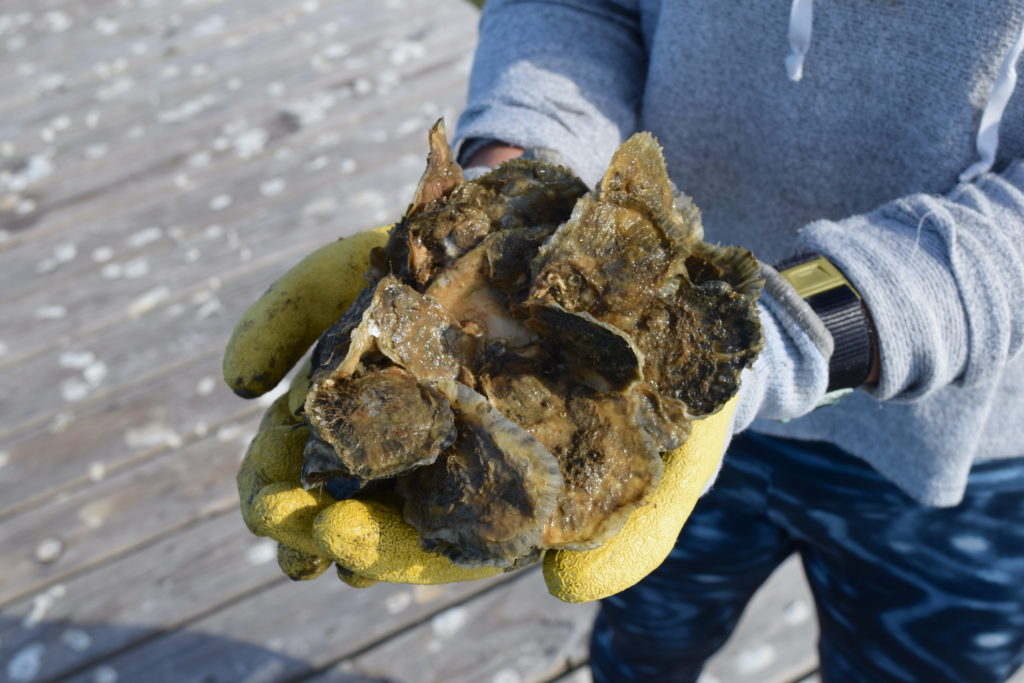
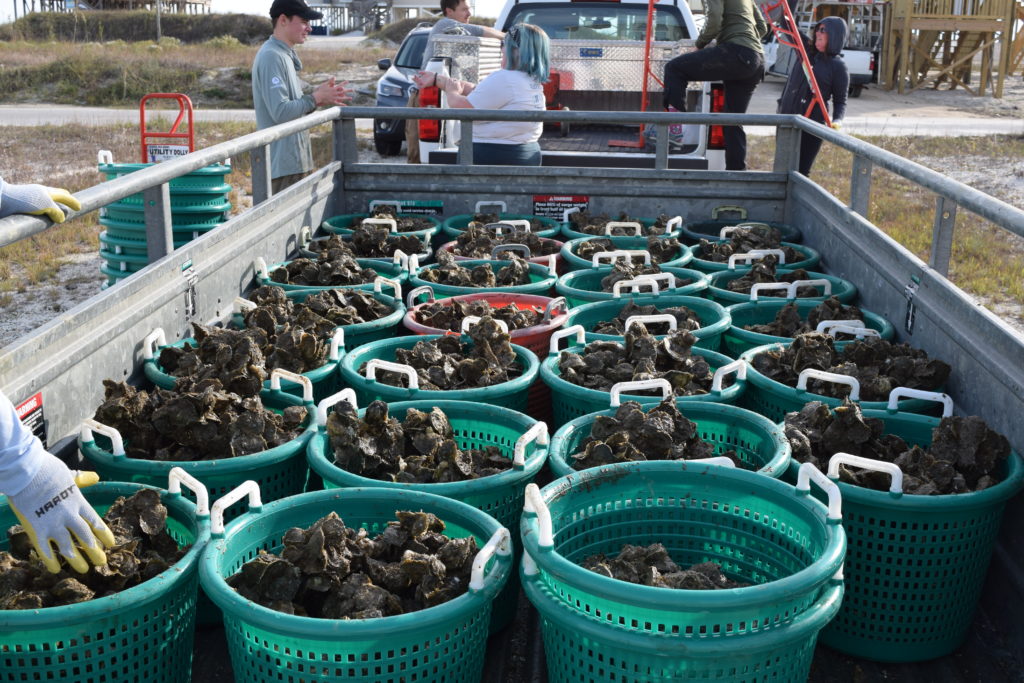
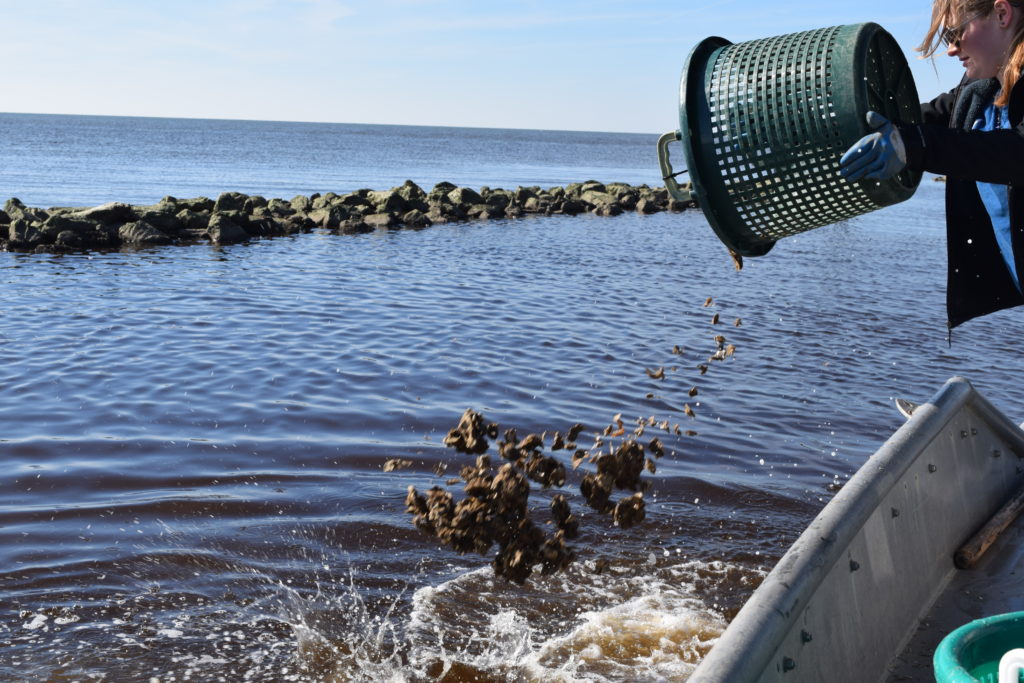
Oysters are a biological touchstone in Coastal Alabama and provide valuable resources for the ecosystem. The health status of our oyster populations is inextricably tied to the health of the Bay. That is why we’ve sought ways to bolster oyster restoration efforts with the help of local experts. Enter P.J. Waters, Ph.D., who runs the Alabama Volunteer Oyster Gardening Program through the Auburn University Marine Extension and Research Center. Since the program’s inception 23 years ago, more than one million oysters have been grown in cages on private docks by volunteers for outreach and educational purposes. Mobile Baykeeper is partnering with both Auburn’s program and local property owners to double this number over the next three years.
How did oyster gardening start?
In 2001, a local graduate student replicated oyster gardening in Alabama, a project that originated in the Chesapeake Bay area. Waters says the work was only meant to last a couple of years, but the participating volunteers had other ideas. They loved being connected to restoration efforts and pushed for the continuation of the program. Thanks to support from regulatory authorities, volunteers, Alabama Coastal Foundation, and other partners, Auburn’s program has sustained this work in Coastal Alabama and has also expanded into Mississippi and Little Lagoon near Fort Morgan.
How can I get involved?
Interested homeowners who want to participate directly in the program by maintaining a few oyster baskets can reach out to oystergardening@auburn.edu and the Auburn marine team will determine if your dock is near water that supports oyster growth. If you qualify, Auburn’s team will provide cages filled with young oysters to hang on your dock. As the dock owner, you will monitor the oysters and perform necessary maintenance to the cages during the spring and summer months. In the fall and winter months, Auburn’s marine program will collect the oysters from your dock and plant them at restoration project sites in Mobile Bay.
Homeowners who would prefer to have Mobile Baykeeper staff manage a larger installation of approximately 20,000 oysters (20 baskets) at their dock can reach out to oysters@mobilebaykeeper.org to see if their site is appropriate for our program.
Where do the oysters come from and what do they need to grow?
The Auburn Shellfish Laboratory grows oysters from Alabama stock in their hatchery, which means that any oysters originating from this program are able to reproduce in the wild. These oysters typically require salty water and need to be situated off the bottom to limit predatory snails and crabs from infiltrating the cages. The great part about the process is that they feed themselves by filtering water around your dock.
Much like a canary in a coal mine, diminishing reefs can provide insight into the overall status of Mobile Bay. Fortunately, oysters can be part of the solution for restoring water quality, shorelines, and habitats, in addition to mitigating harm from stressors we can’t always see. Oysters can remove excess dirt and nutrients by filtering up to 12 gallons of water a day. Oyster reefs can reduce roughly 90 percent of erosive wave energy by acting as a shoreline buffer which helps protect property owners from storm-surge and land-loss over time. Reefs are also an important place for fish, shrimp, and crabs to seek refuge and sources of food.
Our goal at Mobile Baykeeper is to contribute to restoration efforts by growing half a million oysters by the year 2026. Since the start of Mobile Baykeeper’s Oyster Gardening Program, our oysters have become the equivalent of office pets. “How are the oysters looking this week?” or “How many cages do we have now?” are frequent questions heard in passing between meetings.
As we move forward with the program, we will work with restoration ecologists, resource managers, and various agencies and organizations to learn more about how we can help restore conditions for oysters. Restoring our reefs is going to take more than just our teams’ “blood, sweat, and tears” — it requires that our community be stewards of our waters and the life that teems within them.
Cassie Bates is the staff scientist at Mobile Baykeeper.
